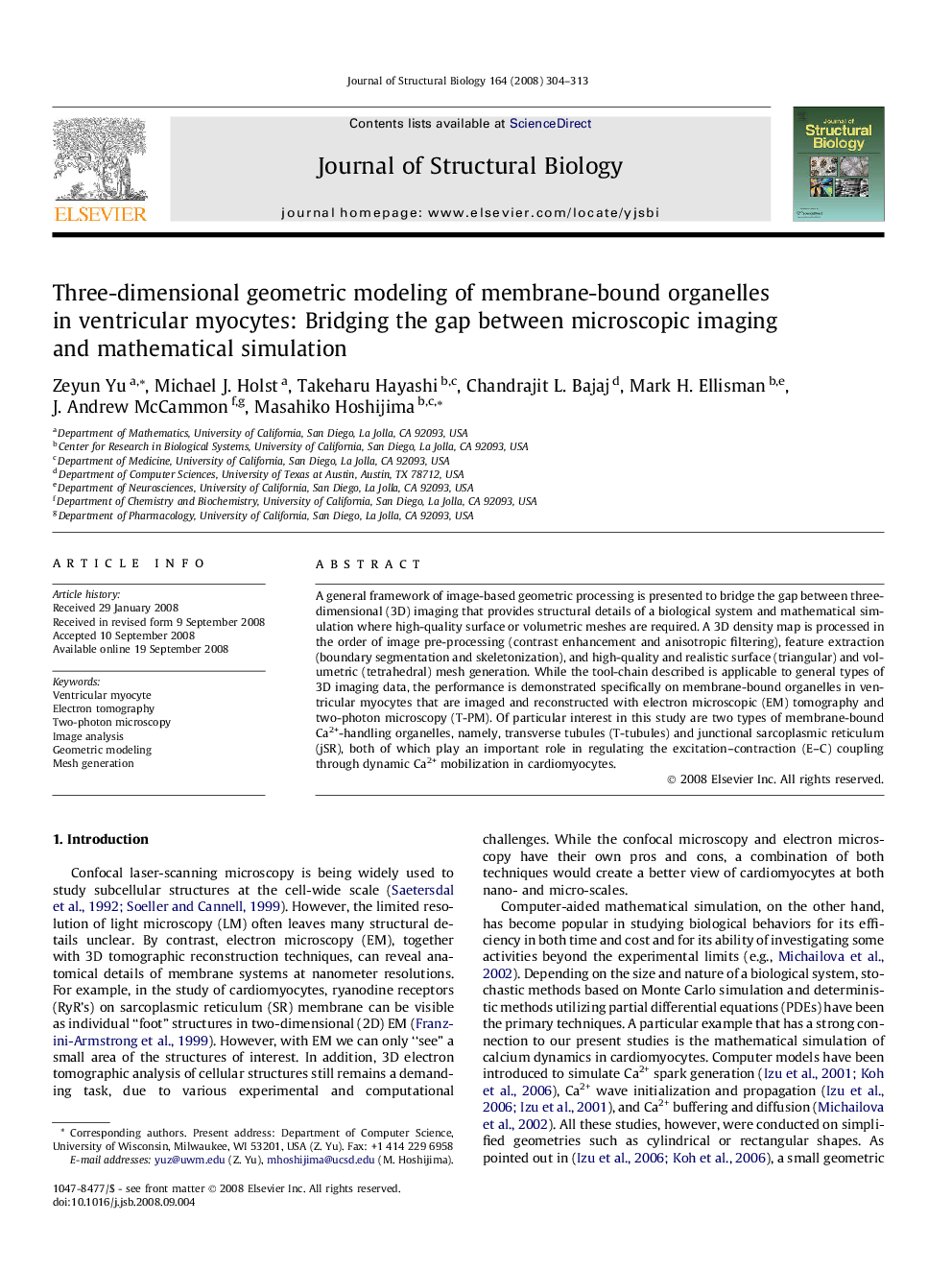| Article ID | Journal | Published Year | Pages | File Type |
|---|---|---|---|---|
| 2829140 | Journal of Structural Biology | 2008 | 10 Pages |
A general framework of image-based geometric processing is presented to bridge the gap between three-dimensional (3D) imaging that provides structural details of a biological system and mathematical simulation where high-quality surface or volumetric meshes are required. A 3D density map is processed in the order of image pre-processing (contrast enhancement and anisotropic filtering), feature extraction (boundary segmentation and skeletonization), and high-quality and realistic surface (triangular) and volumetric (tetrahedral) mesh generation. While the tool-chain described is applicable to general types of 3D imaging data, the performance is demonstrated specifically on membrane-bound organelles in ventricular myocytes that are imaged and reconstructed with electron microscopic (EM) tomography and two-photon microscopy (T-PM). Of particular interest in this study are two types of membrane-bound Ca2+-handling organelles, namely, transverse tubules (T-tubules) and junctional sarcoplasmic reticulum (jSR), both of which play an important role in regulating the excitation–contraction (E–C) coupling through dynamic Ca2+ mobilization in cardiomyocytes.
